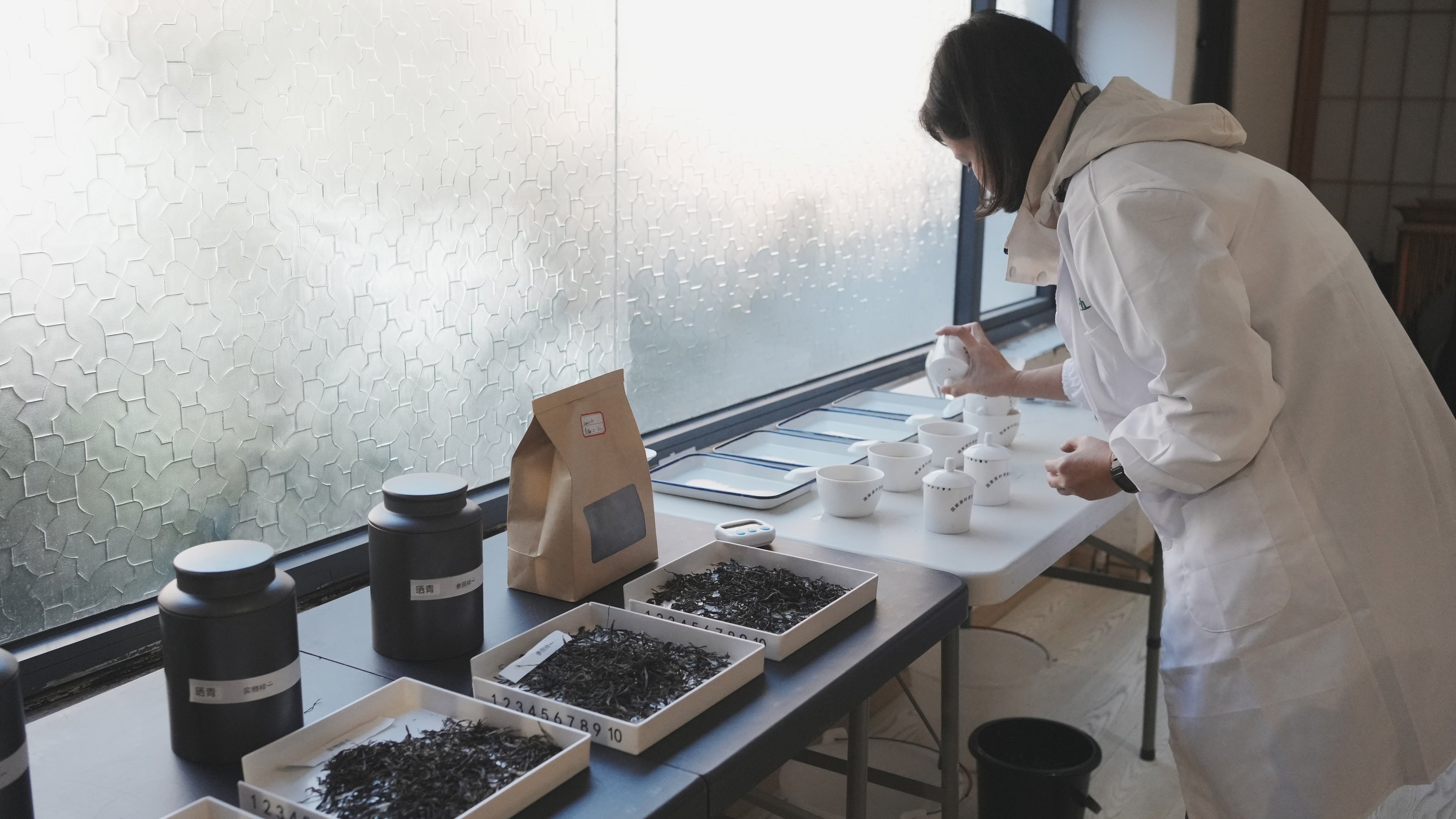Most of us decide whether a tea is “good” based on two things: taste and smell.
But when it comes to professional tea assessment, China has a national grading system (GB/T 23776-2018). At Teahills, this is the lens we apply to every tea we procure. Here is a sneak peak into how our tea expert evaluates tea systematically.
Overview
The appraisal is broadly split into 2 categories. Each is further broken down into 4 sub-categories:
-
Dry Assessment (干评)
- Shape & Structure 形状
- Colour 色泽
- Uniformity 整碎
- Cleanliness 净度
-
Wet Assessment (湿评)
- Fragrance 香气
- Soup colour 汤色
- Taste 滋味
- Spent tea leaves 叶底
1. Observing the Dry Leaves
Before any brewing begins, our tea assessor will take a close look at the dry leaves.
What we examine:
- Shape & Structure – Are the leaves tightly rolled, flat, twisted, or curled? Sharp tips (锋苗) might hint of skilful rolling.
- Colour – Look out for tea furs which indicate high quality leaves, and vibrant colours which are a sign of good craftmanship.
- Uniformity – Whole consistent leaves often signal higher quality than broken or dusty bits
- Cleanliness – Traces of stems and old leaves indicate lack of care in processing.
Even before the first sip, much can be understood.
2.1 Smelling the Aroma
Once brewed, we first carefully observe the aromas release by the tea leaves.
- Green teas: fresh, chestnut, sometime corn
- White teas: light, honeyed, sometimes floral
- Oolongs: complex notes of floral, fruity and roasted
- Black teas: malty, chocolatey, fruity
- Dark teas: earthy, aged wood, sometimes dried dates
While the above is a general guide, each tea has its own classic profile that should be immediately noticeable.
2.2 Tasting with Intention
A key step, this is the segment with the highest weightage in every assessment.
What’s assessed:
- Initial flavour – Is it sweet, bitter, astringent? Is the taste complex or one-sided?
- Mouthfeel – Does it feel smooth, thin, thick, or velvety?
- Aftertaste – The returning sweetness that lingers
Slight hints of bitterness and astringency may be welcomed, if it results in a pleasant sweet aftertaste (苦后回甘,涩后生津). This flavour complexity elevates the enjoyment of savouring good teas.
2.3 Examining the Brewed Liquor
Next, the liquid is judged by:
- Clarity – A clean, transparent liquor indicates good leaf quality and clean processing
- Colour – Should reflect the expected tone for that tea category
- Brightness – Liveliness in the liquor suggests freshness
The appearance of the brew can quietly signal both age and craftsmanship.

2.4 Inspecting the Wet Leaves
Finally, the leaves are examined one last time.
Observing closely what’s left in the cup:
- Are the leaves tender with a slight bounce, or tough and prickly?
- Is the colour even and appropriate for the tea type?
- Does the leaf look carefully handled or hastily processed?
This final check confirms everything the aroma, taste, and brew colour have hinted at.
Why We Do This at Teahills
We understand these standards inside out so you don't have to. And that’s how it should be.
At Teahills, we select only teas that pass this level of scrutiny, amongst many others that have been presented to us. Because we believe in excellence - the quiet, technical mastery that makes each tea what it is.
Curious to taste teas that meet these standards?
Explore our expertly selected collection.



0 comments